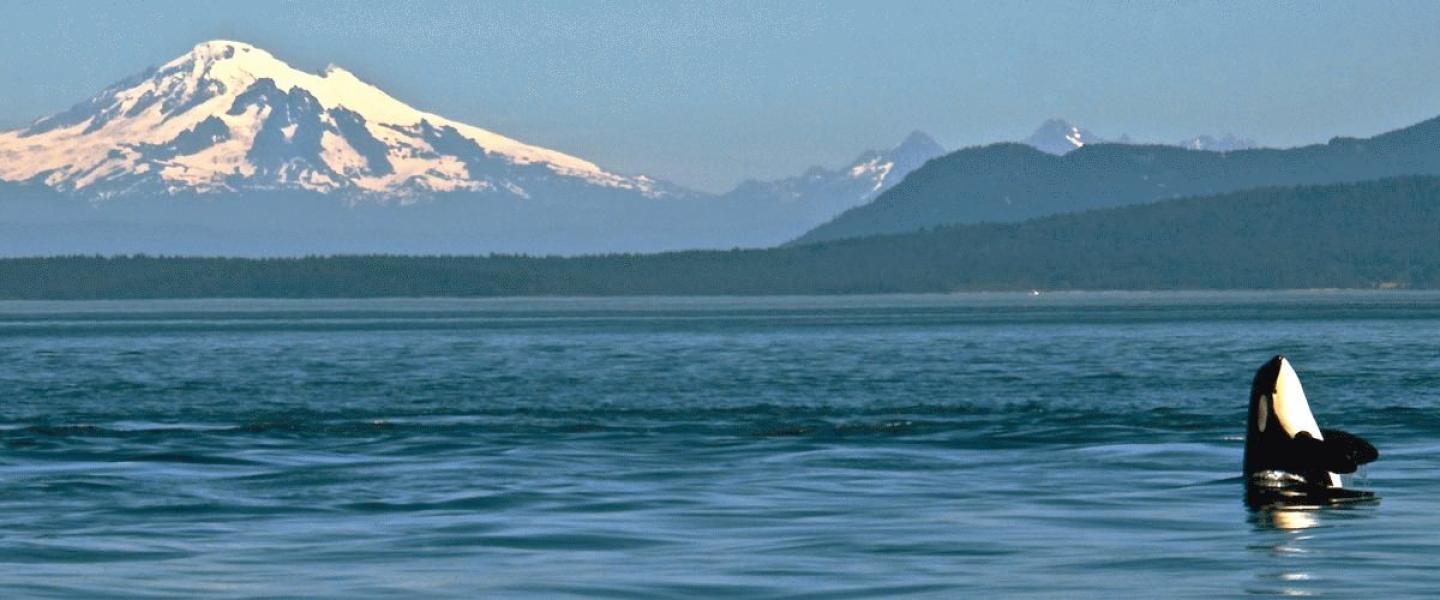
Maxx K. | M/V Sea Lion | 04/10/2022 | 12:30pm
Today was FUN. It was a cold day out on the water today, sure. But it was also absolutely gorgeous. A low layer of clouds rolled over the San Juan’s, dumping sporadic bouts of torrential rain over small pockets of the islands. We moved southbound out of Friday Harbor through the San Juan Channel, hoping to wrap our way around the southern side of the island and along the western shore line. We began hearing rumors of Killer Whales early in the morning that had followed our exact route: through the San Juan channel and up through the Haro Strait.
We stopped briefly to admire Steller Sea Lions as they sloshed around in the choppy water around us at the Whale Rocks. Two bald eagles (one adult and one juvenile) sat above them, surveying the roccus of Steller Sea Lions that roared below.
We moved onward, around the southern slopes of south beach until Lime Kiln Lighthouse appeared on the horizon. We puttered along with caution, as we were now entering the proximity of rumored Southern Resident Killer Whales. Within a few moments J-Pod appeared along the horizon, sporadic groups of blows sprouted up at our 10 o’clock. Then again at our 12 oclock.
Southern Residents (SRKWs) are a critically endangered ecotype of Killer Whale and as of March, there are only 74 SRKWs left in the wild, split between J,K and L pods. The San Juan Islands used to be a home base for these incredible animals. They used to flourish here, eating predominantly Chinook (King) Salmon which are unfortunately no longer prolific in these waters. Because of this unfortunate reality, we rarely see the Southern Residents any more and even more devastating, their populations are depleting rapidly.
These days, most of the whales we see are Bigg’s (Transient) Killer Whales. Both Bigg’s and Southern Residents are both Killer Whales, yes, but I think of them as two completely different animals.
These two different whales are:
Genetically distinct.
Linguistically distinct: They speak two completely different languages.
Culturally distinct.
Dietarily different: SRKW’s eat predominantly Chinook Salmon while Bigg’s strictly eat marine mammals.
They also typically move and live with vastly different social structures: Bigg’s typically keep to smaller groups, often just mom and her calves. SRKWs on the other hand, will travel with their entire pod.
Needless to say, the fact that we were in the presence of such intelligent and important families was overwhelming to say the least. We had to keep a significant distance away from them (½ mile) but could see them scattered along the horizon, surfacing with some unison before diving once more into the Haro Strait below. We left them soon, rounding ourselves over the northern shores of San Juan Island, through a squall of rain and gently back into Friday Harbor.